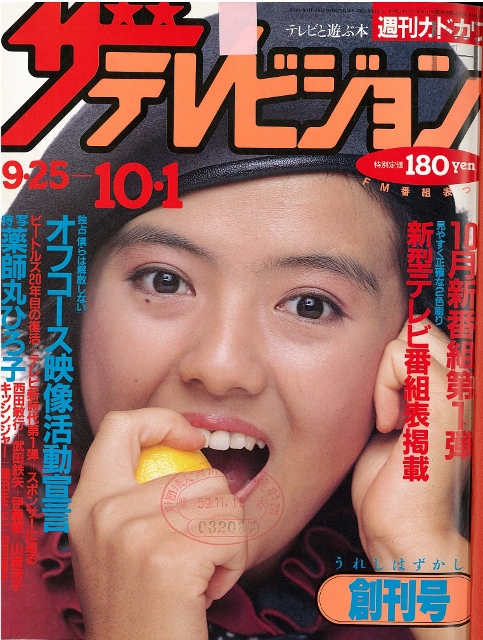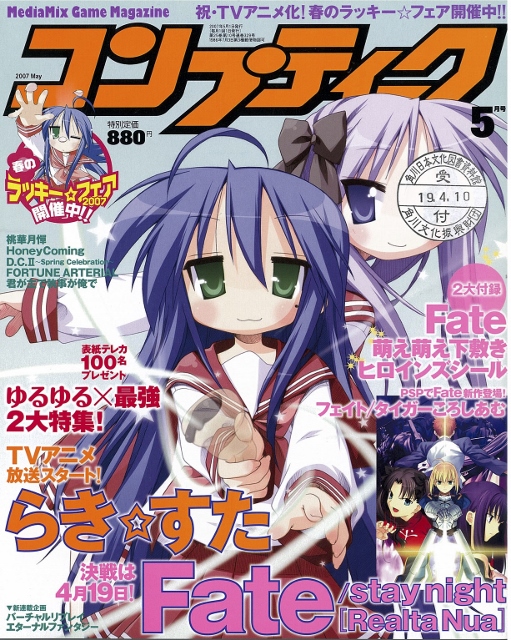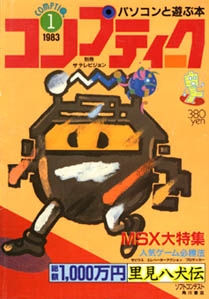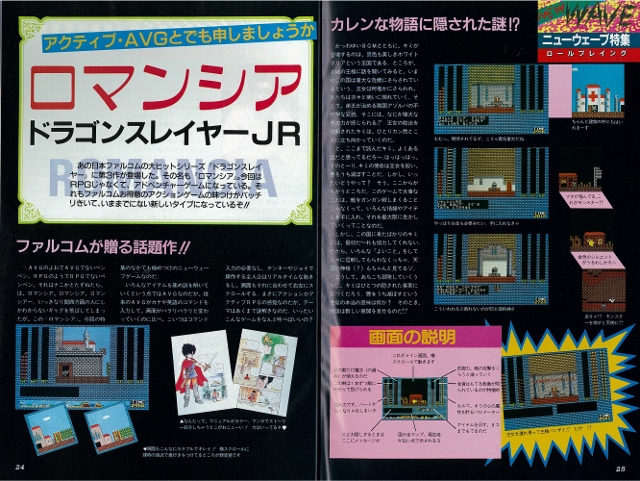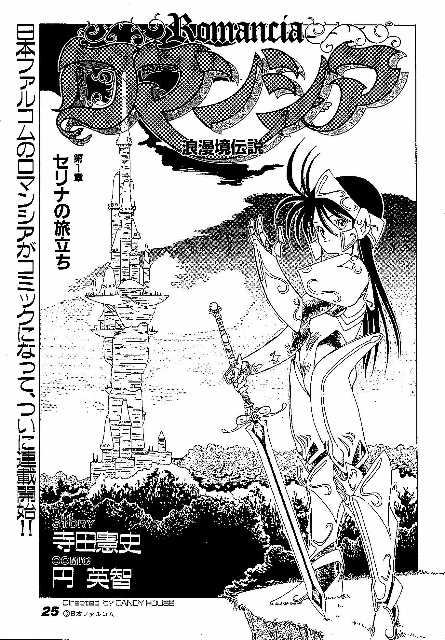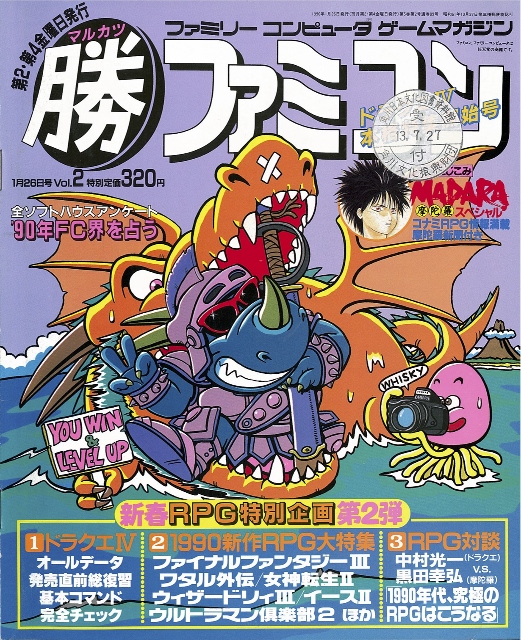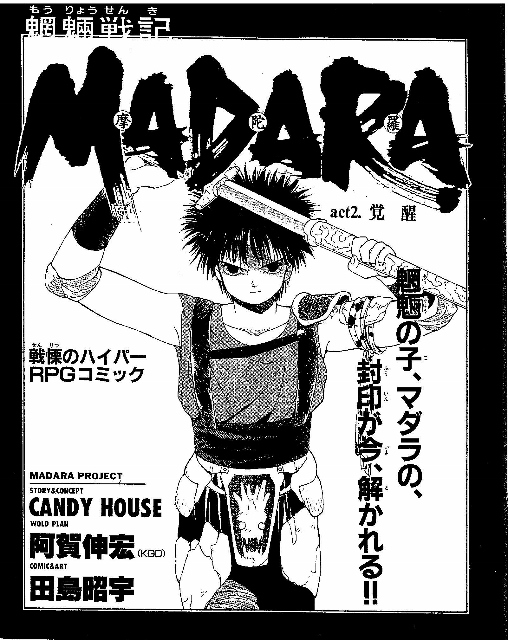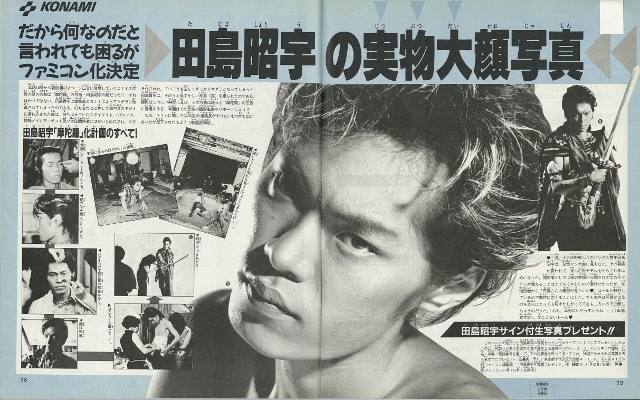Volume 5, Issue 1, December 2015
Marc Steinberg
Concordia University
I would like to take the liberty of opening this article in this important journal special issue on the “Geemu et/and media mix” with a reflection on the title of my 2012 book, whose subject in many ways intersects with that of this special issue: Anime’s Media Mix: Franchising Characters and Toys in Japan. There have been quite valid questions raised around the first part of the title: why anime’s media mix? This is something I struggled with myself during the writing of this book, and developed several answers to within the book itself, as well as since its publication. To boil it down, though, I would point to three principal reasons:
1) There is an intensity to the media ecology around anime that one is more hard pressed to find, for instance, around manga alone.[1] Manga are the R&D department for what is now popularly called “contents”; anime is the means of extending and reordering a franchise such that it becomes quantitatively and qualitatively different. The tipping point of a series’ popularity and impact often occurs around the anime, rather than other media forms. Which is not to say these other media are not key to the development of the media mix. But finding and noting this tipping point more often than not led me to the start of an anime series. In short the original medium that spurs the media mix is not the central medium of the media mix as phenomenon.
2) There’s also a historical argument embedded in the title: suggesting that the oft-cited “origins” of the media mix in Kadokawa Haruki’s Trinity strategy to sell books, films and soundtracks launched in 1976 is not the start of the media mix, but merely the extension of this logic into the world of film and literature. Researching the emergence of the media mix as a practice led me to reaffirm the suggestion that Tetsuwan Atomu (Astro Boy, 1963) was the first media mix. Anime hence assumes transmedia development from its very beginning.
3) Finally, there is the need to differentiate what goes by the name of the “media mix” in Japan from the marketing practice of the media mix, a word that is used in marketing research with a good deal of regularity to this day, as Google Scholar Alerts continually reminds me. (Suffice to say I get far, far more alerts for the marketing media mix than for the anime media mix.) Hence the need to differentiate the marketing media mix from what I called the anime media mix (but which of course may be called the Japanese media mix, the transmedia mix, or whatever other term one might wish to designate this by).
But this special issue asks us to address the important question: what is the place of Japanese video games (or geemu) in the media mix? Is there something like the “games media mix” that differs from the “anime media mix”? How might the study of games require a reorientation of game scholarship on the one hand, and media mix or transmedia scholarship on the other? The articles collected in this special issue respond to these important questions posed by editors Martin Picard and Jérémie Pelletier-Gagnon better than I can. What I would like to do in this brief article is to look back at what is to me increasingly apparent as a key moment in the development of the media mix, a moment as important as the development of anime in the 1960s, and continuing to have an impact on media cultures today: the 1980s. What a glance back at the 1980s will enable me to do is to situate the intersection of gaming and the media mix at this important juncture for the development of what we currently recognize as the media mix. Admittedly this will go over some familiar territory for those who have read Anime’s Media Mix. But in my research since the publication of the book I have grown increasingly convinced about the importance of that historical moment, requiring me to revisit the Kadokawa media mix of the 1980s, and one example in particular: the Madara manga-video game-OVA media mix. Madara might in fact be described as an early video game media mix, or gameic media mix.
In the 1980s, the younger brother of Kadokawa Books president Kadokawa Haruki, Kadokawa Tsuguhiko, was pioneering a new model of the media mix. Unlike the blockbuster film-novel-soundtrack model of his old brother, and then-president Haruki, Tsuguhiko drew on the talents and the vision of some younger staff to develop new platforms for media production, and new modes of connection between media that would ultimately lead it to be the innovative producer of media mix franchises it is today. Before turning to Madara, though, let me linger on one of the earliest major moves of Kadokawa Tsuguhiko in the direction of the gameic media mix. This is the founding of the weekly Za television in 1982.
At first glance, the founding of a weekly magazine on television might not seem to be such a revolutionary move at all. In fact it was more important than it sounds. Within Kadokawa it was a huge move, one to rival Haruki’s creation of a film production unit within the company in the previous decade. Why? In part because one of the vows the dying founder Kadokawa Gen’yoshi demanded his sons make was to foreswear the founding of a weekly magazine (the other two things he asked his sons to absolutely stay away from were sex, scandals and manga.[2] Suffice to say all three promises were eventually broken). Yet this also had significance beyond the confines of the company’s tumultuous family history. Despite the American TV Guide being an example for Tsuguhiko, what he and his editors ultimately created was something very different from a magazine that simply listed TV shows of the upcoming week. What they created was an information magazine that regarded TV not as a series of programs, but rather as a hub around which many things could develop – from television shows, to stars, to video games, to films. In today’s terms, they viewed television as a media platform.[3] It must be remembered that this was the era that saw the proliferation of VCRs (a new medium enabling time-shift viewing, and the sale of films to individual viewers) and television-based video game systems. It’s an era when television went from being the boob-tube purveyor of broadcast programs, to being a hardware monitor at the center of a new ecosystem of software: from video tapes to video games to cable TV.[4] Za television was founded to anticipate and capitalize on a new multimedia era.[5] The platform era as we know it now was coming, and Za television was what we would today call a contents magazine that anticipated the proliferation of media forms and modes of access that we are accustomed to today.
As unlikely a beginning as it may seem, Za television was one of the roots from which Kadokawa’s new media mix empire unfolded. The magazine participated in the Kadokawa Haruki media mix, drawing on the attraction of its female stars who it featured on the cover and inside the magazine, leaning on the popularity of the Kadokawa-made actresses Yakushimaru Hiroko, Harada Tomoyo and Watanabe Noriko [Figure 1]. But it also recognized the multimedia environment around the television set by having feature sections on animation and console video games, a portend of things to come. In November 1983, the first issue of the computer game magazine Comptiq was released as a supplement of Za television. Comptiq would later become one of the key magazines for Kadokawa’s media mix, in fact bearing the subtitle “MediaMix Magazine” [Figure 2]; in the 1980s its tagline was the rather simple and to the point “The Book for Having Fun with Personal Computers” (Pasokon to asobu hon) [Figure 3]. One of the main editors for Comptiq was Satō Tatsuo, a man who would later become the president of Kadokawa, but who during the 1980s was the editor-in-chief for a number of Kadokawa magazines that unfolded from Za television, namely Comptiq and, as of April 1986, Marukatsu Famikon, a Nintendo Famikon game magazine that split off from Comptiq, and later became a hub of media mix activity. Finally, Za television was also the incubation area for an animation magazine, New Type, which would grow to be one of the most important of the industry. The associate editor (later editor-in-chief) of New Type, Inoue Shin’ichirō, got his start as the editor of the animation section of Za television, before the animation division split off and became the editorial team for New Type.[7] While there isn’t space enough to go into detail here, it bears mentioning that several other “software”-oriented magazines were created by Kadokawa Tsuguhiko following the success of Za television: Video Data, CD Data, and other specialist magazines that grew out of the market for programming content discovered with the success of Za television.
Comptiq quickly became a multimedia magazine itself. It first started serializing manga in January 1987. Following a series of monthly features on the game Romancia (AKA Dragon Slayer Jr., Nihon Falcom, 1986) starting in November 1986 [Figure 4], the first manga serialization of Comptiq began in January 1987. There was much debate about whether manga had a place in a game magazine, and an information magazine at that. But as Comptiq had positioned itself from the start as a magazine about play and entertainment, the editor in chief Satō felt that manga was a natural extension of their magazine.[8] More to the point, what they serialized were manga adaptations of games, with both Romancia [Figure 5] and Ys (pronounced “Iisu,” Ōtsuka Eiji’s next project which began serialization in May 1988) being games before they were manga. It was Ōtsuka’s subsequent project with manga artists Tajima Sho-u that garnered the most attention, however: Mōryō senki Madara. Madara began not as a game, but rather as a manga that mimicked the properties and rules of a role-playing game. It bears reminding that RPGs were all the rage at the time, with Dragon Quest (Chunsoft/Enix, 1986~) and Final Fantasy (Square, 1987~) being only two of the most well known of these. A glance through the pages of Marukatsu Famikon evidences the popularity of RPG games of all kinds.
At Satō’s suggestion, Madara began serialization in Kadokawa’s Famikon magazine, Marukatsu Famikon, kicking off in the November 27th issue of the biweekly publication [Figure 6 and 7].[9] Satō was the official editor in chief of the magazine, but in practice it was run by its associate editor, Ōta Hiroshi. Madara was unique for being the first manga in a game magazine to be an original work, rather than one based on an existing (or forthcoming) game. In practice this meant the rights to develop the manga were not licensed – or circumscribed – by the game publisher, but were rather owned by Kadokawa and in this case the creator of the manga, Ōtsuka Eiji who went by the pen name “Candy House.”
Madara is significant for being one of the first Kadokawa anime media mixes; the first aimed towards a market of anime/manga/game fans, and also one of the earlier small-scale media mixes, at least relative to Kadokawa Haruki’s high-risk, high-return model of blockbuster, mass media mixes. The scale of the audience was small, in this case. Marukatsu had a circulation in the tens of thousands, but it was a dedicated fan base, most of whom would be counted on to follow the developing media mix in its multiple incarnations. Another key example of the media mix from this period that in some ways invented the form of the light novel so popular today is Record of the Lodoss War, a tabletop RPG “replay” transcription authored by Mizuno Ryō and Group SNE (a tabletop role playing game group led by Yasuda Hiroshi), and based at first on the Dungeons and Dragons rule system.[10]
Madara was not only one of the earliest Kadokawa media mixes of the Tsuguhiko variety; it also became the basis for the theory of media mix development that Ōtsuka published in 1989 as Monogatari shōhiron, or A Theory of Narrative Consumption. As I have already written about extensively elsewhere, this theory is organized around the importance of constructing a world, with the understanding that consumers get access to small parts of this world.[11] But the access to the world was not the only thing that defines this novel model of the media mix. Let us take a closer look at the “Madara Project” as it was known, in order to flesh out a picture of this new media mix model.
Madara is a quest narrative that follows a hero (Madara) as he seeks to regain body organs stolen from him by demons at his birth. Its narrative structurally replicates and roughly retells the story Tezuka Osamu developed in Dororo: that of a young man born to a king, but stripped of his “chakra” and left to die.[12] Madara is saved however, and his missing body parts are all replaced by mechanical parts. In essence he is a cyborg. Whenever he defeats one of the minions of the domineering overlord Emperor Miroku, he regains one of his stolen chakra. He is accompanied on his travels by a young girl, Kirin, who also possesses mysterious powers, and aids Madara on his journey. As Ōtsuka himself declares, the work on the narrative level is an example of structural piracy: the repurposing of an existing narrative, albeit with a new setting – a vaguely Eastern fantasy world.
What is most interesting from the start is that Madara was created in the model of a role playing video game. As part of the preparation for the serialization of Madara, Ōtsuka enlisted the help of a game designer to design the rules for the Madara world. Hence, while initially a manga in form, the Madara world operates according to a set of rules much like the worlds of Dragon Quest or Dungeons and Dragons. These rules mostly lie in the background of the narrative, but the RPG gameic elements of the manga come to the fore periodically. Square inserts with text that simulates the 8-bit Famikon (NES) text display found in some games appear within the manga frames themselves. A combination of narrative information on a character and a list of its rank, hit points, karma and stamina are listed in box inserts, in a stylized pixelated type reminiscent of the 8-bit game experience [Figure 8]. Particular moves or types of attack specific to a given character are also described in this form, along with the effects of such attacks on hit points, and so on. This information was arguably not essential to the narrative itself. While it was included in the manga magazine serialization, and in the first large-format paperback manga books (first published in August 1989), the subsequent small-size paperback manga release removed the RPG inserts. They did not, we can infer, serve a specific narrative function but rather worked to establish the intermedial quality of the manga, situating it as if it were a RPG video game, even though not in fact one, nor based on one. In this regard the tag-lines that accompanied the manga during its serialization are worth noting: “The Horrifying Hyper RPG Comic,” was its original tagline; “The Much-Talked About RPG Comic”; and “The RPG Comic that Feels 100% Like a Game” (ゲーム感覚100%のハイパーRPGコミック!!) being perhaps the most significant tagline. The emphasis on RPG-like experience and the game-like here is clearly key to the promotional strategy around Madara, and to its framing as a hybrid narrative-game text.
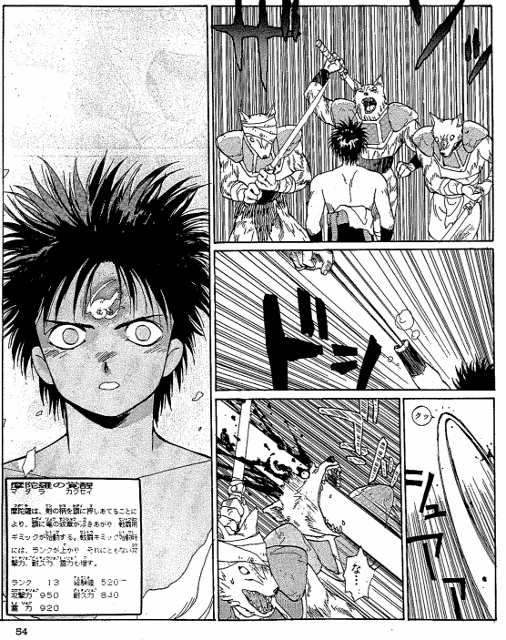
Figure 8: Madara’s Hit Points, Maru Katsu Famicon, February 12 1988
While this comic evoked a Famikon RPG, it took the sales of over 100,000 copies of the Madara manga book to convince the Madara project managers to go ahead with the production of a video game.[13] This production was announced definitively in the July 28th 1989 issue of Marukatsu. This issue also featured a Madara newspaper that offered both information about the series, as well as background information about the production of the series. The Madara project team began collaborating with a programmer from Namco, who soon moved to Konami, where the game was ultimately built and released for the Famikon platform. In the lead up to the March 30 1990 release of the first Madara game, there were repeated ads run in Marukatsu Famikon, as well as numerous special features dedicated to it. Some of these ads featured the Madara artist Tajima Shō-u dressed as the character Madara, fueling a fandom around Tajima himself [Figure 9].[14]
Unexpectedly, perhaps, Tajima himself became a star, and a source of new articles and special features. Separately, also in Marukatsu, a series of articles published over a two month period entitled “Kuro’s Madara Production Diary” chronicle chief game designer Kuroda Yukihiro’s production of the game. A television ad was also created for the release of the game, in which animation of Madara was intercut with game play sequences of the game. Significant here is the use of animation, which anticipates the eventual production of an animation version of the series :
Sure enough, the first of two OVA (Original Video Animation) productions was released in March 20th, 1991, with the second of the two videos released later that year, on December 20th. Both videos were priced at a relatively steep 9800 yen (roughly $80USD at the time), and aside from video rentals, the purchases of these videos required some deal of disposable income. Along with disposable income, fans of the series were presumed to be active contributors to the manga, with periodic invitations for contribution of character designs of monsters, for instance, that would be used in later moments of the manga. Crowd-sourcing the production, and the existence of an active fan base who could be so drawn on, were key elements of this version of the media mix. Indeed, we can say that the image of the RPG conjured the type of the active fan that was then drawn on for the co-construction of the series. This incorporation of fans into the production of the text drew on the fan practices of the time, and anticipates the blurring of the distinction between formal and informal creative economies that is intensified in the “consumer generated content” era of the mid-2000s onward.
Finally, on the subject of authorship, it is interesting to look at the credits to the manga for an understanding of the complex nature of authorship within this series. The credits change over the course of the series, and for instance the release of the large format manga book credits Tajima Shō-u “with Madara Project.” The credits for the comic during its magazine serialization are rather more complex. Madara Project is described as:
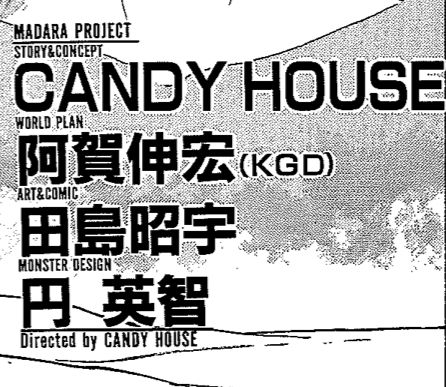
Figure 10: Maru Katsu Famicon, February 12 1988
Story & Concept: CANDY HOUSE
World Plan: Aga Nobuhiro [later the author of Madara novelizations]
Art & Comic: Tajima Sho-u
Monster Design: Tsubura Hidetomo
Directed by CANDY HOUSE [Figure 10]
How should we understand the “directed by” credit? The credit gestures, we could say, to the type of role Ōtsuka calls a media mix “producer,” pointing to the importance of having a transmedia approach to authorship itself. Ōtsuka (as Candy House) operates as an authorial or producerly role, ensuring the proper unfolding of the franchise. At one point in his A Theory of Narrative Consumption he dubs this role “game master.”[15] This seems an apt term, given that it comes from the realm of the tabletop role playing game, with the game master the creator and narrator of the game.
A final element we should note from this early Kadokawa Tsuguhiko-style media mix is the element of the world, present already in the “World Plan” credit above. This emphasis on world came in part from the inspiration from the tabletop role playing game, where a given world and its set of rules is used as the ground from which to construct a number of narrative “plays.”[16] Instead of starting with an individual work, then, Ōtsuka and his collaborators started by creating the world to which the work would belong. Rather than placing the importance on a Trinity of products – the book-film-soundtrack of the Haruki media mix – the second Kadokawa media mix put the emphasis on the consumption of the world upon which products were based. The result was that the creation of products was making the number of narratives or products that could be developed potentially infinite. Here I should note that the term “world” refers to the cosmology, the rules of the world, the chronology of events that take place in the world – and that give a sense of reality or verisimilitude to this fictional universe.
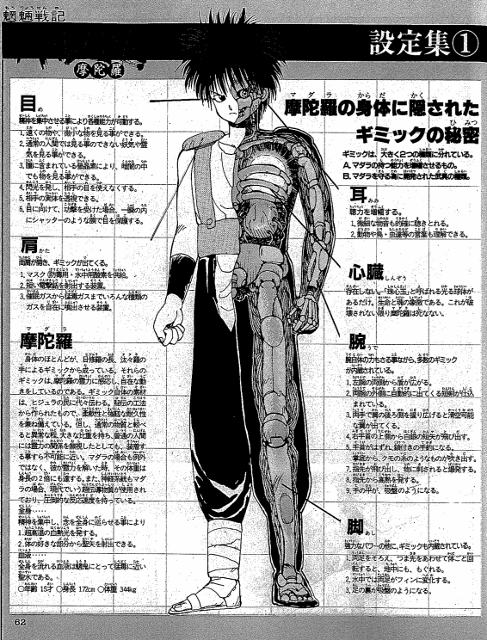
Figure 11 : Maru Katsu Famicon, December 11 1987
While the emphasis on worlds is not unique to the Japanese media ecology – Henry Jenkins writes persuasively about the importance of worlds to transmedia entertainment, for instance[17] – worlds are central to the media mix as developed at Kadokawa in the 1980s. Madara offers a persuasive instance of this. At the end of every installment of the comic, there was a “Settings Collection” (設定集) page; a special information section on either main characters, their monster adversaries, or the world [Figure 11]. In short it was a fragment of detailed information about one element of the larger Madara world (settei being another word for the term sekai or world; Ōtsuka uses the terms interchangeably in his A Theory of Narrative Consumption).
Here I’d like to quickly draw some conclusions from my necessarily brief analysis of the Kadokawa Tsuguhiko media mix and Ōtsuka’s Madara in particular. What we see with the example of Madara is that the video game as a medium is central to the media mix as developed here, from the assumption of an active, gamer audience contributing to the work, to the position of the creator as game master, to the internal hybridity of the work that visually replicates 8-bit game aesthetics and hence enables cross-media development, to the publication of the original comic in a game magazine. Despite my earlier formulation of the anime media mix, then, we might consider calling this newer development the gameic media mix, insofar as games are central to the conceptualization and deployment of the media mix at Kadokawa in the late 1980s. While anime is certainly part of this mix, it is also the case that games have a fundamental structuring role to play here, arguably impacting the very style of open media mix that was developed by Kadokawa Tsuguhiko and his editors and creators in the mid- to late-1980s and ultimately through the 2000s to this day.
As I come to realize more and more in pursuing the lines of study first published in Anime’s Media Mix, the editors of this volume are quite right to emphasize the gameic character of the media mix – and the necessity of considering games as an integral part of the media mix, particularly from the 1980s forward. I hence read with great interest the work in this volume, and look very forward to more work in this vein in the future.
Marc Steinberg is Associate Professor of Film Studies at Concordia University, Montreal, where he teaches film, animation and media studies. He is the author of Anime’s Media Mix: Franchising Toys and Characters in Japan (University of Minnesota Press, 2012). An expanded and revised version of this work, Naze Nihon wa “media mikkusu suru kuni” nano ka (trans. Nakagawa Yuzuru, supervised by Ōtsuka Eiji, Tokyo: Kadokawa E-Pub, 2015), digs deeper into the history of the media conglomerate Kadokawa, famous for media mix hits like Record of Lodoss War, Suzumiya Haruhi and Lucky Star, and examines the “platform capitalism” of Niconico Dōga in the context of the recent KADOKAWA-Dwango merger.
Notes
[1] I pick up on manga here in part because it would arguably be the closest historical contender for the designation of the term media mix, and in part because of reviewer Casey Brienza’s suggestion that it should be manga, not anime that we should focus on, given that many anime begin as manga. As I emphasize in the book itself, the “original” medium of a given media mix should not be considered the defining medium of the media mix, a point Brienza does not acknowledge or address. See Brienza, “Book Review: Anime’s Media Mix: Franchising Toys and Characters in Japan” at
[2] See Nico Nico Douga founder Kawakami Nobuo’s interview with current Kadokawa CEO Satō Tatsuo, “Geemu no mawarini sugoi zainou ga atsumatteita – nihon no contentsu sangyou wo furikaeru “geemaa wa motto keieisha mezasubeki!” dai 12 kai wa, KADOKAWA daihyoutorishimariyaku, Satou Tatsuo ga gesuto” (There was extraordinary talent gathered around games. Looking back at the Japanese contents industry: “Gamers should try harder to be managers!” 12th installment), http://www.4gamer.net/games/999/G999905/20130704001/
[3] Author’s interview with Kadokawa Tsuguhiko, December 14, 2013.
[4] Interview with Satō, “There was extraordinary talent gathered around games.” http://www.4gamer.net/games/999/G999905/20130704001/
[5] Satō, Subete wa koko kara hajimaru, 131.
[6] Author’s interview with Kadokawa Tsuguhiko, December 14, 2013.
[7] Author’s interview with Ōtsuka Eiji, December 16, 2013.
[8] Interview with Satō, “There was extraordinary talent gathered around games.”
http://www.4gamer.net/games/999/G999905/20130704001/
[9] Author’s interview with Ōtsuka Eiji, December 16, 2013.
[10] Ōtsuka gives an account of the importance of Lodoss to the creation of what is now called the light novel in Kyarakutā shōsetsu no tsukurikata (How to make character novels) (Tokyo: Kodansha, 2003).
[11] See Chapter 5 of Anime’s Media Mix; and “Ōtsuka Eiji and Narrative Consumption: An Introduction to ‘World and Variation,’” in Mechademia 5 (2010), 99-104.
[12] Ōtsuka notes this structural piracy of Tezuka’s work in multiple places, one of which is Kyarakutā shōsetsu no tsukurikata, 48.
[13] Author’s interview with Ōtsuka Eiji, December 16, 2013.
[14] See the November 10, 1989 issue of Marukatsu for a special on Tajima.
[15] Ōtsuka Eiji, Monogatari shōhiron kai (Tōkyō: Asukī media wākusu, 2012), 253-6.
[16] Ōtsuka discusses this model as individual play in Ōtsuka Eiji, “World and Variation: The Reproduction and Consumption of Narrative,” translated by Marc Steinberg in Mechademia 5 (2010), 108. Ōtsuka further discusses the importance of the TRPG to the development of the media mix in his interview with me.
[17] Jenkins writes: “Transmedia entertainment relies as much on world-building as it does on traditional storytelling. Transmedia practices use the audience’s fascination with exploring its richly detailed world (and its attendant mythology) to motivate their activities as they seek out and engage with content which has been dispersed across the media landscape. Recent projects, such as Cloverfield, True Blood, and District 9, have relied on transmedia strategies to generate audience interest in previously unknown fictional universes, often combining promotional and expositional functions.” http://henryjenkins.org/2010/01/announcing_transmedia_hollywoo.html#sthash.CTwhCrEg.dpuf

